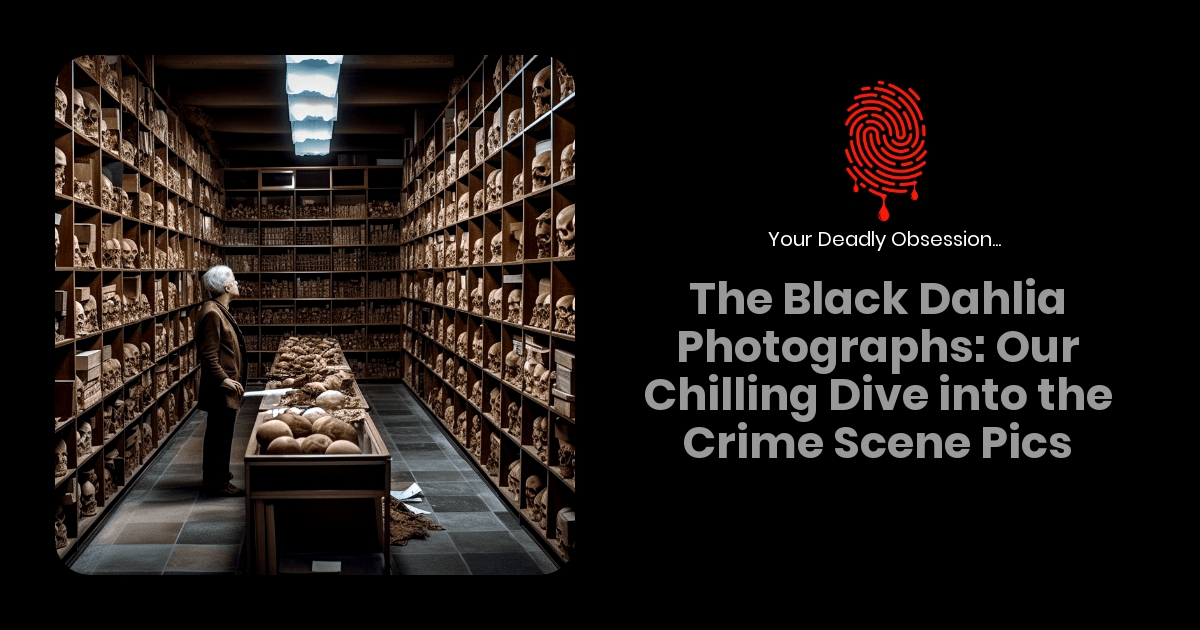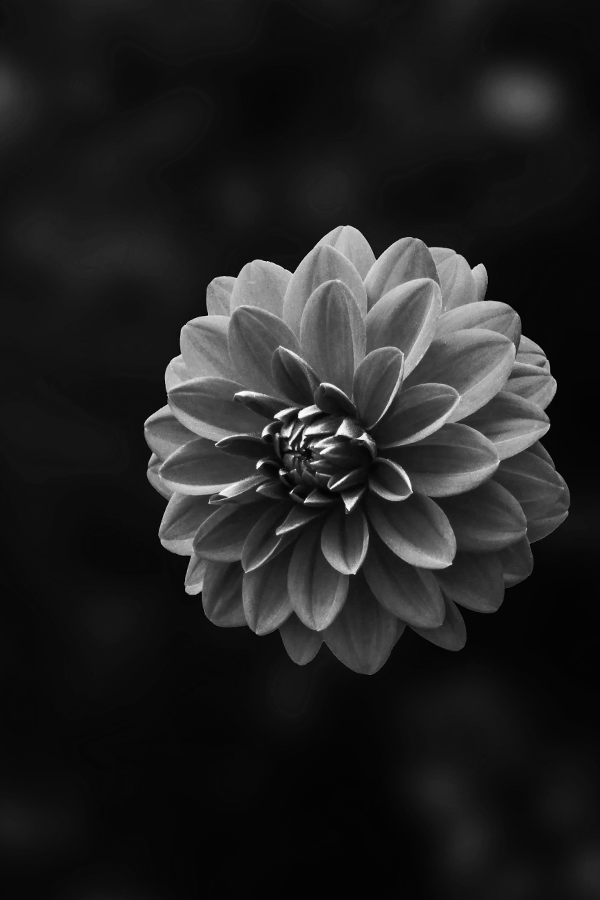Unveiling The Mystery Of Black Dahlia Photographs
The tragic story of the Black Dahlia continues to captivate the world decades after the event. The photographs associated with this case have become iconic symbols of one of the most infamous unsolved murders in history. These images, both haunting and mysterious, continue to intrigue researchers, true crime enthusiasts, and historians alike. In this article, we will delve deep into the world of Black Dahlia photographs, exploring their significance, origins, and the enduring fascination they hold.
The Black Dahlia photographs represent more than just visual records; they are pieces of a puzzle that continue to challenge the brightest minds. The case remains one of the most compelling unsolved mysteries, with the images playing a pivotal role in piecing together the story of Elizabeth Short, the woman behind the nickname "Black Dahlia."
Through this article, we aim to provide a comprehensive understanding of the Black Dahlia photographs, their relevance in the case, and their continued influence on popular culture. This investigation will explore the history, analysis, and interpretation of these images, shedding light on their importance in the broader context of criminal investigations.
Read also:Mastering Transition Words Enhance Your Writing Flow And Clarity
Table of Contents
- Introduction to Black Dahlia Photographs
- Biography of Elizabeth Short
- Photographic Evidence in the Case
- Historical Context of the Black Dahlia Murder
- Iconic Images and Their Significance
- Forensic Analysis of the Photographs
- Cultural Impact of the Black Dahlia Case
- Modern Interpretations and Theories
- Preservation Efforts for Black Dahlia Photographs
- Conclusion and Final Thoughts
Introduction to Black Dahlia Photographs
The Black Dahlia photographs are a crucial component of one of the most infamous murder cases in American history. These images, taken shortly after the discovery of Elizabeth Short's body in 1947, have become synonymous with the mystery surrounding her death. The photographs document the crime scene and the condition of the victim, providing a chilling glimpse into the brutal nature of the crime.
As part of the investigative process, these images were used to gather evidence and piece together the events leading up to Elizabeth Short's murder. Over time, the photographs have transcended their original purpose, becoming cultural artifacts that continue to inspire curiosity and debate.
Why the Photographs Matter
The significance of the Black Dahlia photographs lies not only in their role as evidence but also in their ability to evoke emotions and provoke thought. They serve as a reminder of the brutality of the crime and the enduring mystery surrounding it. The images have been studied extensively by experts, offering insights into forensic techniques and the evolution of criminal investigations.
Biography of Elizabeth Short
Elizabeth Short, also known as the Black Dahlia, was born on July 29, 1924, in Boston, Massachusetts. Her life was tragically cut short at the age of 22 when she was found murdered in a vacant lot in Los Angeles. Below is a summary of her personal details:
| Full Name | Elizabeth Short |
|---|---|
| Nickname | Black Dahlia |
| Date of Birth | July 29, 1924 |
| Place of Birth | Boston, Massachusetts |
| Date of Death | January 15, 1947 |
| Place of Death | Los Angeles, California |
Photographic Evidence in the Case
The Black Dahlia photographs were taken by crime scene investigators and press photographers shortly after the discovery of Elizabeth Short's body. These images captured the gruesome details of the crime scene, including the severe mutilation of the victim's body. The photographs have since become iconic symbols of the case, often used in documentaries, books, and films.
Types of Photographs
- Crime scene photographs
- Close-up images of the victim
- Photographs of potential evidence
Historical Context of the Black Dahlia Murder
The murder of Elizabeth Short occurred during a period of significant social and cultural change in post-war America. The case gained widespread media attention due to the brutal nature of the crime and the mysterious circumstances surrounding it. The Black Dahlia photographs played a crucial role in shaping public perception of the case, contributing to its enduring legacy.
Read also:Who Is Klaus Grabowski Discovering The Legacy And Achievements
Iconic Images and Their Significance
Among the most famous Black Dahlia photographs is the image of Elizabeth Short's body lying in the vacant lot where she was discovered. This photograph, along with others taken at the scene, has become emblematic of the case. The images not only document the crime but also serve as a testament to the victim's humanity, reminding viewers of the tragic loss of life.
Analysis of Key Images
Experts have analyzed these photographs extensively, looking for clues that might shed light on the identity of the perpetrator. Forensic techniques, such as blood spatter analysis and wound pattern examination, have been applied to the images to reconstruct the events of the crime.
Forensic Analysis of the Photographs
The Black Dahlia photographs have been instrumental in advancing forensic science. Investigators used the images to study the victim's injuries and determine the cause of death. Modern technology has allowed for further analysis, revealing details that were previously overlooked.
Techniques Used
- Blood spatter analysis
- Wound pattern examination
- Facial reconstruction
Cultural Impact of the Black Dahlia Case
The Black Dahlia photographs have had a profound impact on popular culture. They have inspired numerous books, films, and television shows, ensuring that the case remains relevant in modern times. The images have also contributed to the growing interest in true crime, captivating audiences worldwide.
Representation in Media
From the film "The Black Dahlia" to various documentaries, the case continues to be revisited and reinterpreted. The photographs serve as a central element in these adaptations, providing a visual anchor for the story.
Modern Interpretations and Theories
Despite decades of investigation, the Black Dahlia case remains unsolved. Modern interpretations of the photographs and the evidence have led to new theories about the identity of the killer. Advances in technology and forensic science have opened up possibilities for solving the case, although no definitive answers have been found.
Emerging Theories
- Serial killer hypothesis
- Personal vendetta theory
- Unlikely suspect scenarios
Preservation Efforts for Black Dahlia Photographs
Given their historical significance, efforts have been made to preserve the Black Dahlia photographs for future generations. Archives and museums have taken steps to ensure the longevity of these images, recognizing their importance in the study of crime and history.
Challenges in Preservation
Preserving photographs from the mid-20th century presents unique challenges, including deterioration of film and degradation of prints. Experts have employed advanced techniques to restore and digitize the images, ensuring their availability for research and education.
Conclusion and Final Thoughts
The Black Dahlia photographs represent a critical component of one of the most infamous unsolved murders in history. These images, both haunting and evocative, continue to captivate audiences and inspire investigation. Through forensic analysis, cultural interpretation, and preservation efforts, the photographs remain a vital part of the ongoing quest for truth.
We invite you to share your thoughts and theories about the Black Dahlia case in the comments section below. For more articles on true crime and historical mysteries, explore our other content and stay updated on the latest developments in the world of investigative journalism.
References:
- Los Angeles Police Department Archives
- National Institute of Justice
- True Crime Magazine


![Black Dahlia Flowers [Types, Care Tips and Pictures]](https://gardentabs.com/wp-content/uploads/2019/10/iStock-823665460.jpg)